By visiting our site, you agree to our privacy policy regarding cookies, tracking statistics, etc.
Menu engineering boosts profitability by highlighting the most profitable menu items and guiding customer choices. By analyzing sales data and item margins, it identifies popular and high-margin dishes. This helps ensure menu items are priced correctly and recipe portions or ingredients are adjusted as needed.
Get an inside look at how menu engineering can help you make more informed decisions about what to keep, change, or promote on the menu, balancing popularity with profitability.
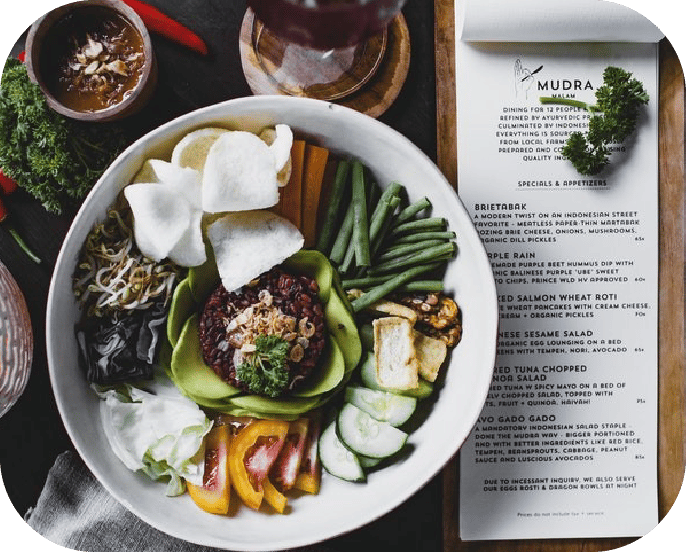
Menu engineering is like crafting a roadmap for your restaurant’s success through the menu itself. It’s not just about how things look on paper—it’s understanding what makes customers tick and using that knowledge to boost your bottom line. By digging into sales data and crunching numbers on profit margins, chefs and managers can figure out which dishes are top performers, and which might need some adjustments. This isn’t just about pricing and portion sizes—it’s about creating a menu that practically sells itself.
Imagine knowing exactly which dishes bring in the most profit and which ones need improvement. Menu engineering provides that insight. It’s all about making smart decisions based on what your customers actually order and what helps your business thrive.
By utilizing tools like point-of-sale data and reporting on detailed recipe costs, you can refine your menu to highlight your best dishes and entice customers with what they desire—whether they’re aware of it or not. It’s a secret weapon to steer your restaurant towards success, one menu item at a time.

Designing a menu isn’t just about listing dishes—it’s about strategically influencing customer choices and boosting your restaurant’s profitability. Small adjustments in menu design can yield significant results, potentially increasing revenue by up to 35%. Here are some key principles to consider when you’re putting together your menu:
Think strategically about where you place your dishes. Research shows that customers’ eyes are naturally drawn to the middle and upper-right corners of the menu, forming what’s known as the “Golden Triangle.” By showcasing high-margin items in these prime spots, you can significantly increase their chances of being ordered.
Creating space around your most profitable dishes is another clever tactic. This draws attention to these items and makes them stand out more, subtly nudging customers towards them.
Consider using decoys. Here, you place lower-priced, high-profit items next to your more expensive dishes. This makes the higher-priced options seem like a better value, enticing guests to opt for them while feeling like they’re making a smart choice.
Don’t overwhelm your guests with too many choices. Limiting each section of your menu to around seven items helps customers make decisions more easily. When people feel less overwhelmed, they’re more likely to confidently choose something they’ll enjoy.
Colors play a powerful role, too. Different hues can evoke different emotions—red can create a sense of urgency and green can suggest freshness. Using colors thoughtfully can subtly influence what your guests decide to order.
And here’s a surprising tip about pricing—omitting dollar signs and using rounded numbers can actually encourage guests to spend more. It’s a small change that can make a big difference in how your menu impacts your sales.
Finally, consider a tactile menu. A menu that feels good to hold and is easy to navigate adds to the overall dining experience. It’s all about creating a menu that not only looks great but also enhances every guest’s visit to your restaurant.
To create a menu that really stands out, focus on balancing variety with manageability, using design elements like white space and color schemes, and writing vivid descriptions that bring your dishes to life.
First, getting your menu size just right is key. A menu that’s too big can overwhelm guests and make it hard for them to choose. A menu that’s too small might not offer enough variety. Organize your offerings into clear sections—like appetizers, entrees, and desserts—to make it easy for guests to find what they want. Thoughtfully using white space can make your menu look clean and elegant while highlighting important items. And don’t underestimate the power of visual cues and color schemes since they can subtly guide your guests’ choices and draw attention to specials or high-margin dishes.
Descriptions matter, too. Use lively, engaging language to spark your guests’ interest and build anticipation. Sharing the stories behind your dishes can add a personal touch that makes the dining experience more memorable. Think about menu engineering— analyzing data to optimize item placement and pricing. Placing popular and high-margin items in premium spots can increase revenue. Regularly updating your menu keeps it fresh and in line with your restaurant’s concept, keeping your guests excited to return and try something new.

Menu engineering can be a game-changer for your restaurant, helping to boost profits and streamline operations. By thoughtfully designing and pricing your menu, you can shine a spotlight on your most profitable dishes and gently guide your customers towards them. Picture placing your high-margin items right where your customers’ eyes naturally go, like the top right corner or the center of the menu. This smart positioning can lead to more orders of these dishes, giving your profits a nice boost without any extra effort.
But it’s not just about making more money. Menu engineering also helps simplify things in the kitchen. By figuring out which dishes aren’t popular or don’t bring in much profit, you can trim the fat from your menu. This means less food waste, lower inventory costs, and a more efficient kitchen. Plus, a clean, well-organized menu makes it easier for guests to choose what they want, enhancing their overall dining experience. Happier customers are more likely to come back, turning first-time visitors into regulars. In a competitive industry, these little adjustments can make a big difference, giving your restaurant a noticeable edge.
As a restaurant owner, you’re always looking for ways to boost increase margins and keep your business growing. That’s where menu engineering steps in—it’s like having a trusted tool to help you make smart decisions that drive revenue and profits. Think of it as your guide to understanding and maximizing the potential of your menu items, their costs, and their ability to bring in money.
Let’s talk about your contribution margin. This invaluable concept shows how much profit each dish generates after factoring in its production costs. By digging into your food expenses and keeping tabs on your purchases, you can pinpoint exactly how much it costs to prepare each dish.
Once you’ve gathered all this information, you can start organizing your menu items into different categories—which ones profit the most, and which ones could use a boost. This classification helps you make informed decisions to increase your revenue and decrease your expenses. You might adjust prices, fine-tune recipes to make them more cost-effective, or showcase your top-performing dishes on the menu.
The best part? Menu engineering isn’t a one-time fix. It’s an ongoing process of refining your menu based on customer feedback and market trends. By staying proactive and continuously optimizing your menu, you’re not just meeting your customers’ expectations—you’re setting your restaurant up for long-term success.
Menu engineering helps you identify and promote your most profitable dishes while considering which underperforming items to revamp or remove. It also blends data analytics with insights into human behavior to boost profits per guest.
By reviewing food costs and categorizing dishes, you can redesign your menu to highlight the best-performing items. A well-engineered menu can increase your revenue by up to 35%. Key components include assessing each dish’s popularity and profit margin, which allows you to make better decisions about pricing, portions, and ingredient use.
Start with menu costing. Calculate the exact cost of each dish by breaking down its ingredients. Automating this process with POS systems or accounting software can optimize food usage and reduce waste.
Menu analysis helps you evaluate each dish’s profitability. Categorize dishes into Stars (high profit and sales), Opportunities (high sales but lower profit), Puzzles (high profit but low sales), and Dogs (low profit and sales). Promote Stars, improve Opportunities, boost Puzzles, and consider removing Dogs to keep your menu profitable and appealing.
GET MORE TIPS OF MAKING YOUR RESTAURANT INTO A MONEY-MAKING MACHINE
Menu engineering is a smart way to cut costs and make more money for your restaurant. By looking at how much money each dish brings in, you can figure out which ones cost a lot to make but don’t add much to your bottom line. Then, you can decide if you want to change the prices or tweak the recipes to make them cheaper to make without losing quality. Also, by putting your menu items into groups based on how much profit they make, you can focus on promoting the ones that make the most money and eliminate those that don’t earn much. This helps you use your resources wisely and make more profit in the long run.
LEARN MORE ABOUT REDUCING COST OF GOODS AND IMPROVING MARGINS

Reducing food cost percentage with menu engineering is like fine-tuning your restaurant’s recipe for success. Food cost percentage shows how much of your sales revenue goes into buying ingredients. While industry standard pegs the ideal at around 30%, it can vary depending on your restaurant type. Fast-casual places aim for 28-30%, pizza spots shoot for 18-22%, and fine dining might go over 40%.
But here’s the thing—your food cost percentage isn’t fixed. It’s something you can always improve. That’s where menu engineering come in. You can analyze each dish to see which ones cost too much to make compared to how much they sell for. Then, you can decide if you need to change their prices or recipes to save money without losing quality.
You can also categorize menu items based on how much profit they make. This helps you focus on promoting the dishes that make the most money while considering getting rid of or changing the ones that don’t. It’s about using resources wisely and making smart choices that make your restaurant more profitable over time.
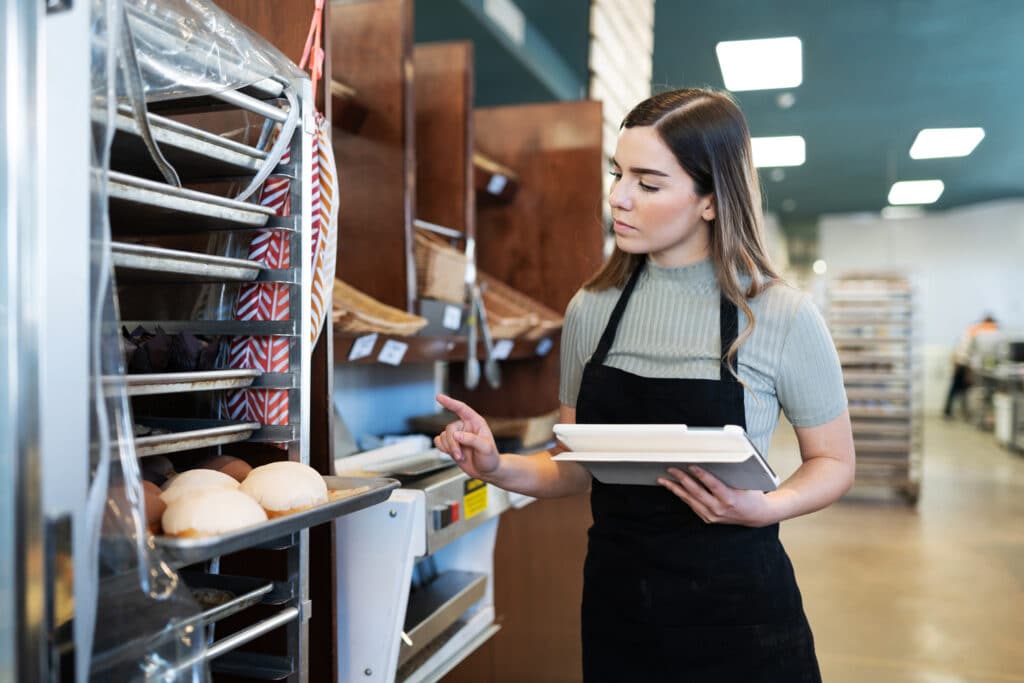
Navigating inflation with menu engineering involves smart adjustments that help manage rising costs while keeping margins steady. Menu engineering examines each dish’s profitability, offering a top-down strategy to boost revenue. By understanding which dishes are both popular and profitable, you can tweak their placement or pricing to make sure you’re still making money, even when prices are going up.
Pairing menu engineering with Actual versus Theoretical (AvT) tracking gives you a full picture of your costs from the ground up. AvT analysis compares what you expect to spend on ingredients with what you actually spend, pointing out any areas where you’re losing money due to waste, theft, careless preparation, or unexpected price changes. Protect your profits by tackling these issues head-on. These strategies offer a well-rounded approach to dealing with inflation. With them, you can steer your restaurant through any economic ups and downs while keeping your profits healthy.
Menu engineering isn’t just about boosting profits—it’s about making guests happy. Analyzing the performance of each dish provides priceless insights into your customers’ preferences. It’s not just about the popularity of certain items, it’s about understanding what truly resonates with guests, whether it’s their go-to comfort food or a unique culinary experience they can’t resist.
With this knowledge, you can tailor your menu to consistently offer surprise and delight. Highlighting longtime favorite dishes and introducing new, exciting options keeps guests engaged and eager to explore. This sense of discovery enhances their overall dining experience, fostering a deeper connection to your restaurant and building loyalty. So, whether it’s showcasing their tried-and-true favorites or surprising them with new flavors, menu engineering ensures customers leave with smiles on their faces, eagerly anticipating their next visit.

Menu engineering is a powerful tool for restaurant owners looking to boost operational efficiency. Taking the time to dig into each menu item’s performance provides invaluable insights into what guests really love. With this knowledge, you can make smart decisions to streamline inventory, spruce up menu design, and even tweak pricing to ensure you’re maximizing profits. Plus, by pinpointing those high-margin items and giving them the spotlight they deserve, you’re not just cutting down on waste—you’re bringing in more revenue too. Keeping your menu fresh and exciting based on what your customers love, not only keeps them satisfied—it helps you build a loyal fan base that keeps coming back for more.
Implementing menu engineering effectively is like creating a roadmap for success in your restaurant. It’s more than just what you serve—it’s about how you present it. To start, thoroughly analyze your menu. Look closely at your sales data and listen to customer feedback. By identifying your bestsellers and the items that aren’t performing well, you’ll gain insights into what your customers prefer.
Once you’ve identified your top-performing dishes, it’s time to give them the attention they deserve. Strategically place these dishes within your menu layout to ensure they catch the eye of your guests. Consider putting them at the top of the menu or in a special section. Use attractive design elements and enticing descriptions to make them even more appealing. By presenting these dishes effectively, you’ll encourage customers to try them and boost your sales.
By using menu engineering techniques in your restaurant, you’ll not only increase your revenue but also create an enjoyable dining experience that keeps customers coming back for more.

Creating an appealing restaurant menu is an art form that requires understanding your customers, competitors, and cost structures to boost profitability. Before you dive into menu design, it’s important to conduct thorough competitive research. Take a look at what your competitors are offering and at what price points to get insights into popular dishes and market gaps. Be sure you have a thorough understanding of your costs. This research not only helps you assess the competition but can also spark ideas for unique menu items that can set your restaurant apart.
Understanding your target audience is just as important. Whether your restaurant caters to quick-service, fast-casual, or fine dining customers, knowing their preferences and expectations is key. Everything from menu offerings to pricing strategies should align with your audiences’ desires.
Setting the right price points requires a deep understanding of costs, profit margins, and perceived value. By using metrics like cost of goods sold and break-even point, you can strategically price your menu items to maximize revenue without alienating customers. Menu engineering techniques empower you to highlight specific items and enhance visual appeal to drive sales and profit.
Assembling the perfect pricing strategy for your restaurant menu requires meticulous attention to detail. If you’re using POS-integrated restaurant management software, begin by looking into your sales reports and menu mix (PMIX). This approach shows which dishes are top performers, and which could benefit from adjustments. By understanding both the profitability and popularity of each item, you can fine-tune your menu to strengthen profits and cater to customer preferences.
It’s also important to closely monitor prime costs, such as cost of goods sold (CoGS) and labor expenses. These fundamental elements shape your restaurant’s financial landscape, making it crucial to align PMIX insights with data on prime costs. Conducting a competitive analysis provides valuable context for pricing decisions. By evaluating the offerings and pricing strategies of neighboring establishments, you can position your menu competitively while emphasizing the value and quality of your offerings.
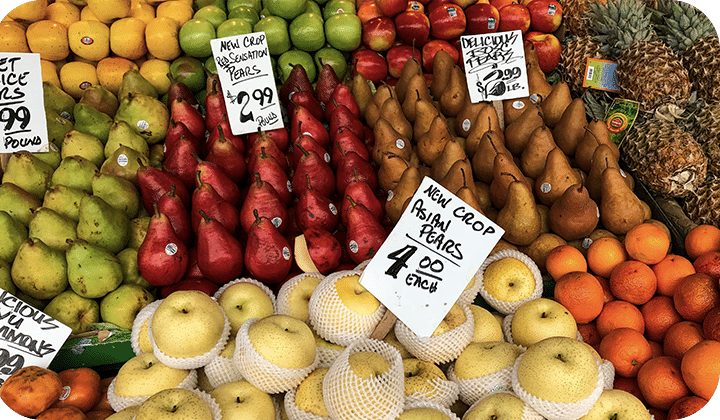
Mastering recipe costing isn’t just about numbers—it’s about boosting restaurant profits and ensuring long-term success. By diving into ingredient costs and, in the current era, new cost centers like delivery fees, you can uncover the true value of each menu item. This insight becomes the foundation for smart decisions that can take a menu from good to outstanding.
With this knowledge, you can categorize your dishes by profitability and popularity:
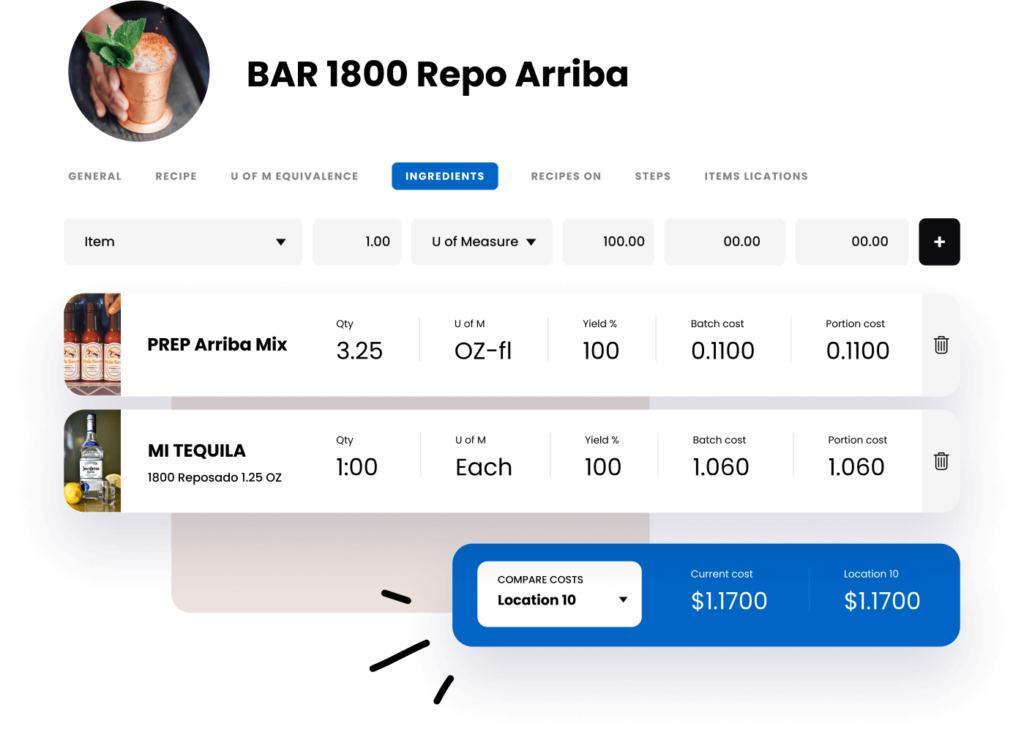
By understanding guest behavior and strategic menu design that highlights popular and profitable dishes, you can increase sales and enhance the dining experience.
Here are some essential tips to get you started on the path to menu success:

Here are some additional strategies to boost menu profitability during the menu engineering process:

Modern restaurant management software acts as a secret weapon in menu engineering, offering precise, automated data to create a more profitable menu. Using this information strategically allows operators to:
By integrating your restaurant management platform with your point of sale (POS), you can pull up-to-date reporting on inventory, recipe costing, AvT cost variance, and more, driving your strategy based on popularity and profitability.
Restaurant management software not only automates these reports and empowers data-driven decision making, but also integrates them into a comprehensive system that streamlines operations. By running these automated reports, you can enhance your menu engineering efforts, making strategic, data-driven decisions that improve profitability and elevate the overall guest experience.
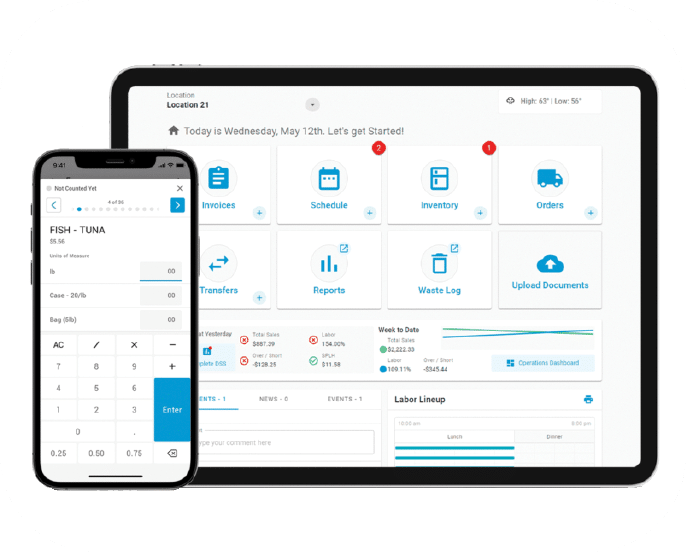
Menu engineering varies significantly across different restaurant service styles. For example, for fast-casual eateries, the focus may be on streamlining operations and highlighting high-margin items to ensure quick service and profitability. Fine dining establishments, on the other hand, might emphasize hard-to-acquire or seasonal ingredients, requiring a nuanced approach to menu design that balances luxury with cost control. Family-style restaurants typically offer value and variety, requiring a strategy that promotes popular, high-margin dishes while managing portion sizes and food costs.
Regardless of restaurant type, effective menu engineering combines data-driven insights with a deep understanding of the target market to optimize menu mix, pricing, and overall profitability. By tailoring strategies to the specific needs and goals of each restaurant type, operators can enhance guest satisfaction and boost their bottom line.
With customers spending an average of just 109 seconds looking at a menu and 80% of food sales coming from only 20% of menu items, a well-engineered menu can significantly influence your bottom line. Here’s how you can transform your pizzeria menu into a profit-driving machine:
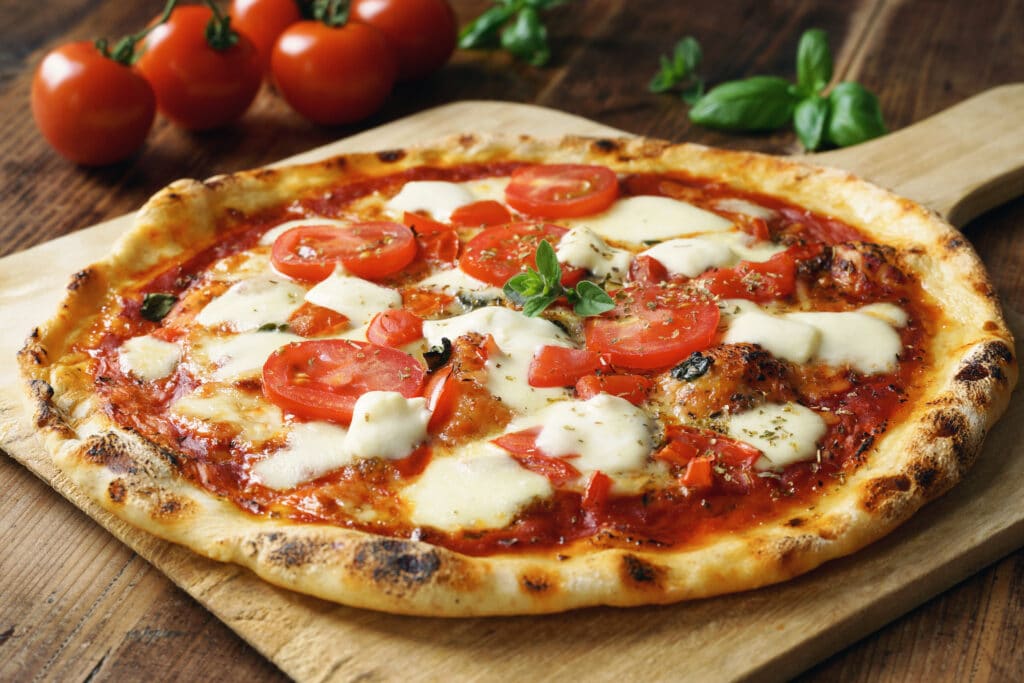
Similar to pizzerias, menu engineering is also a powerful strategy for coffee shop owners looking to boost profitability and guest satisfaction.
Here are some fresh tips to optimize a coffee shop menu:

Bars can also significantly benefit from menu engineering. Get started with these strategies:
In addition to menu engineering by restaurant type, restaurant owners and operators can cater their menu based on the season. Known as seasonal menu engineering, this involves strategically designing a menu to feature items that align with what’s availability at different times throughout the year. This practice relies on the availability of fresh, seasonal ingredients, and taps into guests’ desires for timely, relevant dining experiences.
By rotating menu offerings according to the seasons, restaurants can keep their menus exciting, encouraging repeat visits from guests eager to try new dishes. This approach not only enhances the dining experience but also allows restaurants to take advantage of seasonal trends and preferences, offering dishes that customers are more likely to crave during specific times of the year.
Looking to engineer your menu for spring? Begin by identifying core spring ingredients like apricots, artichokes, fresh herbs, and all kinds of berries, and cross-utilize these ingredients in multiple dishes to save on bulk purchases. For instance, incorporate strawberries into salads, desserts like cobblers, and cocktail specials to maximize use and minimize waste. Also, consider preserving peak-season ingredients through drying, freezing, preserving or other methods for later use.
Next, set price points to maximize margins, considering costs, market rates, and the perceived value of your menu items. Use competitive research as a guideline but tailor pricing to reflect the unique value of your restaurant, including service and ambiance. Calculate key metrics like cost of goods sold (CoGS), food cost percentage, and break-even point to inform pricing.
Simply put, seasonal menu items should be priced to optimize profits. Setting prices too high may deter guests, while setting them too low can result in lost potential revenue.
Now it’s time to get the word out: Opt for cost-effective, eye-catching menu display options such as table tents, chalkboards, whiteboards, QR codes, digital menu boards, floor signs, sandwich boards, and window markers to highlight your seasonal offerings.
Pro tip: Use modern restaurant management software to evaluate the success of your seasonal menu, and analyze the data to understand top-selling items and those with the highest profit margins.
Menu engineering plays a key role in creating a profitable Mother’s Day menu. The first step is to analyze current sales data to identify the most profitable dishes to feature. If you’re planning a Mother’s Day brunch, start by reviewing popular items typically ordered on weekend mornings. Note the frequency of orders for each dish, then consider the cost to make each item versus the revenue it generates. If you’ve previously offered Mother’s Day promotions, examine the top sellers from those events to determine if they should be reintroduced.
Restaurant software integrated with your POS system can generate a product mix report to quickly identify the most profitable dishes based on sales frequency. Additionally, create a report to assess guest satisfaction during your usual weekend brunch service, focusing on areas such as food quality, order accuracy, and menu variety. Address any potential issues before the holiday to ensure smooth operations.
And remember, even a small gesture like offering a complimentary slice of cake can make a big difference. It goes a long way in making customers feel appreciated and valued.
GET MORE TIPS ON HOW TO CREATE A PROFITABLE MOTHER’S DAY MENU
Like Mother’s Day, use a menu engineering report to create a menu that delights your guests and boosts your profits for Father’s Day and beyond.
This strategic tool analyzes your sales data, highlighting which dishes are most loved by your guests and which ones are the most profitable.
With this information, you can make smart choices about which dishes to spotlight, adjust, or remove from your menu.
By incorporating festive elements and digging into your data, you can craft a menu that not only celebrates the holiday but also boosts profits.
Creating a profitable St. Patrick’s Day menu involves embracing the day’s spirit while strategically planning offerings. By featuring traditional Irish flavors and leveraging smart business practices, you can attract more guests and maximize revenue.
Restaurants can…
Memorial Day marks the unofficial start of summer, a time when people gather to honor the fallen, enjoy the outdoors, and savor delicious food. Crafting a profitable Memorial Day menu involves tapping into these themes and making strategic choices in your offerings. For example, you can:
The Christmas season is all about celebration, indulgence, and creating lasting memories with family and friends. For restaurants, it presents a golden opportunity to boost revenue by offering a menu that captures the spirit.

See why more than 40,000 restaurants use Restaurant365
Menu engineering is an essential strategy that can significantly impact your restaurant’s profitability and customer satisfaction. By understanding guest behavior, leaning on data-driven insights, and strategically designing your menu, you can highlight popular and profitable dishes that drive sales and enhance the dining experience.
From pizzerias to coffee shops and bars, applying these menu engineering techniques will help maximize revenue, streamline operations, and delight guests. Embrace the power of menu engineering to transform your restaurant’s profitability and achieve long-term success.
Share this blog:
Restaurant365 bridges the gap between accounting and operations by centralizing all data, helping restaurant operators to become more efficient, accurately forecast, and tackle any challenge or opportunity with speed and accuracy.